EL PASO — Yesterday border security expert Todd Bensman evaluated how President Trump’s policies are impacting illegal immigration and smuggling activity in the El Paso sector, across the border wall from Ciudad Juárez.
“What I’m seeing is just pretty much confirming what the numbers show us, which is that everything is way, way down to historic lows,” Bensman told Steve Bannon’s War Room. “Maybe 200-300 a day crossing, and importantly, one hundred percent of those who are caught are being expelled immediately back.”
According to Bensman, the most impactful shift in border policy that President Trump has taken has been to stop releasing illegal aliens into the interior of the United States. “So, that’s why you have two or three hundred, that’s an historic low,” he said.
In addition to apprehensions at the border, U.S. Customs and Border Protection (CBP) also maintains data on “gotaways” — runners who Border Patrol agents see, or who they detect through other evidence such as footprints, but who evade arrest and manage to escape into the U.S. interior.
“The runners and gotaways are also down,” Bensman said. “Remember, we’ve had 2.4 million over the last four years get into the country without Border Patrol laying a hand on them.”
Bensman said the El Paso sector, one of the sectors for Border Patrol, routinely has days where there are no gotaways at all. “And then the days that they do have gotaways, there’s like two or three that they catch, or that they notice. So, that’s really important.”
Bensman shared video “showing the wreck that the Biden administration left the fence, the wall, in. What this tells us is that the original Trump wall has to go up, they can’t waste any time. They’ve got to get that thing up,” he said.
Bensman also showed piles of new building materials that have been waiting, unused, for four years. “I’m not sure where they are on the money part of that, but they’ve got to work and get that thing going, right now,” he said.
Bensman underlined the need for the administration to continue to enforce these security policies scrupulously. “Just because the numbers are down, does not mean that the Trump administration should let off the gas. It’s all gas, no brake, all the time. Can’t change anything at all,” he said.
On March 3 the Pentagon announced a Stryker Brigade Combat Team and a General Support Aviation Battalion would deploy to the southwest border. Bensman said he expected to see Stryker vehicles “coming into this area pretty soon.”
The Stryker vehicle is an eight-wheeled armored platform, lighter than tanks but more robust than light infantry, and it can be configured with a versatile array of gun systems. A Pentagon press release says the Stryker is ideal for the rugged border region.
“They’re needed,” Bensman said. “Even though the numbers are down, they’re needed. That’s how you keep the numbers down.”
Bensman’s footage shows the spot he had filmed the day before, “eight or nine miles to the west,” where the dilapidated section of wall ends in the open desert near Santa Teresa, New Mexico. “You can see that stretch, right there,” he said, “that’s La Linea cartel, right on the other side of that thing.”
During the Biden years Bensman reported many times from the Juarez side, where he filmed illegal immigrants using rope ladders to climb over the wall. In one section in New Mexico, a fragment of the Bush-era wall still stands, “and you could just cut right through it, it’s steel mesh.”
Bensman said Mexico’s own military deployment to the border has also had an impact on curbing runners. “Right now they’re not cutting through as much, obviously, because there’s a lot of soldiers over there,” he said.
But according to the Border Patrol agents Bensman spoke with, the main reason for the infinitesimally low numbers at the border is because the apprehendees are being prosecuted for violating 8 U.S.C. Sec. 1325, the federal statute that criminalizes improper entry by an alien into the United States.
“There’s a lot of Border Patrol,” he said. “They’re not processing people in, they’re out there, and their orders are to catch them and prosecute them. So, apparently, they’re 1325-ing everybody they catch, and they’re putting them in jail. And they’re deporting them all the way back to their home, too, when they’re not doing that.”
Bensman said the difference at the border is “night and day. It is just unbelievable. This is the first time I’ve been down here where it’s not total chaos. Where there’s not just all kind of crazy going on.”
Bensman said he expects to see fourteen Stryker vehicles coming to the El Paso-Juarez area, “and I think there’s a bunch that they’re putting up in Arizona, too. I don’t think that it’s a coincidence that they’re selecting areas where just across, right over here on this side, there are La Linea cartel, and Sinaloa cartel in Arizona, that are under immense pressure from the Trump administration over fentanyl, and other drugs that they’re bringing in.”
Bensman said the strong, visible U.S. military presence should serve as a deterrent to the cartels.
“And I think having a bunch of those eight-wheeler tanks, bristling with machine guns, doesn’t hurt as a disincentive to those cartels that might try to come over here and do something,” he said.
Bannon asked Bensman whether President Trump’s promise of “mass deportation” is being held up due to a lack of resources.
“There is a big difference between detaining people down here on the border, for their quick expulsions, and actual deportation proceedings,” Bensman said. “It’s a legal process in the interior. Chicago, New York, the coasts. And that’s what the money is really needed for, more than anything, is for detention facilities there.”
Bensman said the Immigration, Customs and Enforcement agency (ICE) also needs more personnel, and that military service members are being deputized to assist ICE Enforcement and Removal Operations (ERO) in detaining illegal aliens and smugglers.
“You know, we have 6,000 ICE agents, they’re ERO, that do arrests on the interior.” Bensman said that number reduced substantially during the Biden administration due to demoralization.
“We’ve got to hire more, we’ve got to have air assets, we’ve got to have airplanes, we’ve got to have fuel for the planes to ship people home. There’s a lot to do, in the interior. That’s different from what we do at the border. At the border it’s quick expulsions, quick detentions, you’re going home. We’re putting you over the bridge, we’re putting you on aircraft,” he said.
“And by the way, when they do put them back to Mexico, they don’t just put them back over the bridge,” Bensman said. “They’ll transport them to a different state, like California, and deposit them over there.” In a move called collateral expulsion, returning Mexican nationals to a different port of entry means an alien cannot immediately meet back up with his smuggler.
Aliens from farther afield than Mexico are being flown back to their home countries, Bensman said. “From places like Fort Bliss, which is right over here. I’m hoping to get an opportunity to watch one of those flights leave. It’ll be a military aircraft to Guantanamo Bay,” he said. “There’s a lot going on.”
Find me on X at @KimWexlerMAJD and follow @BensmanTodd
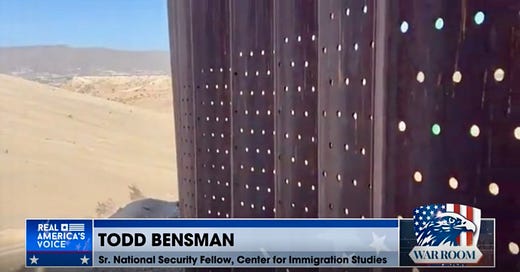


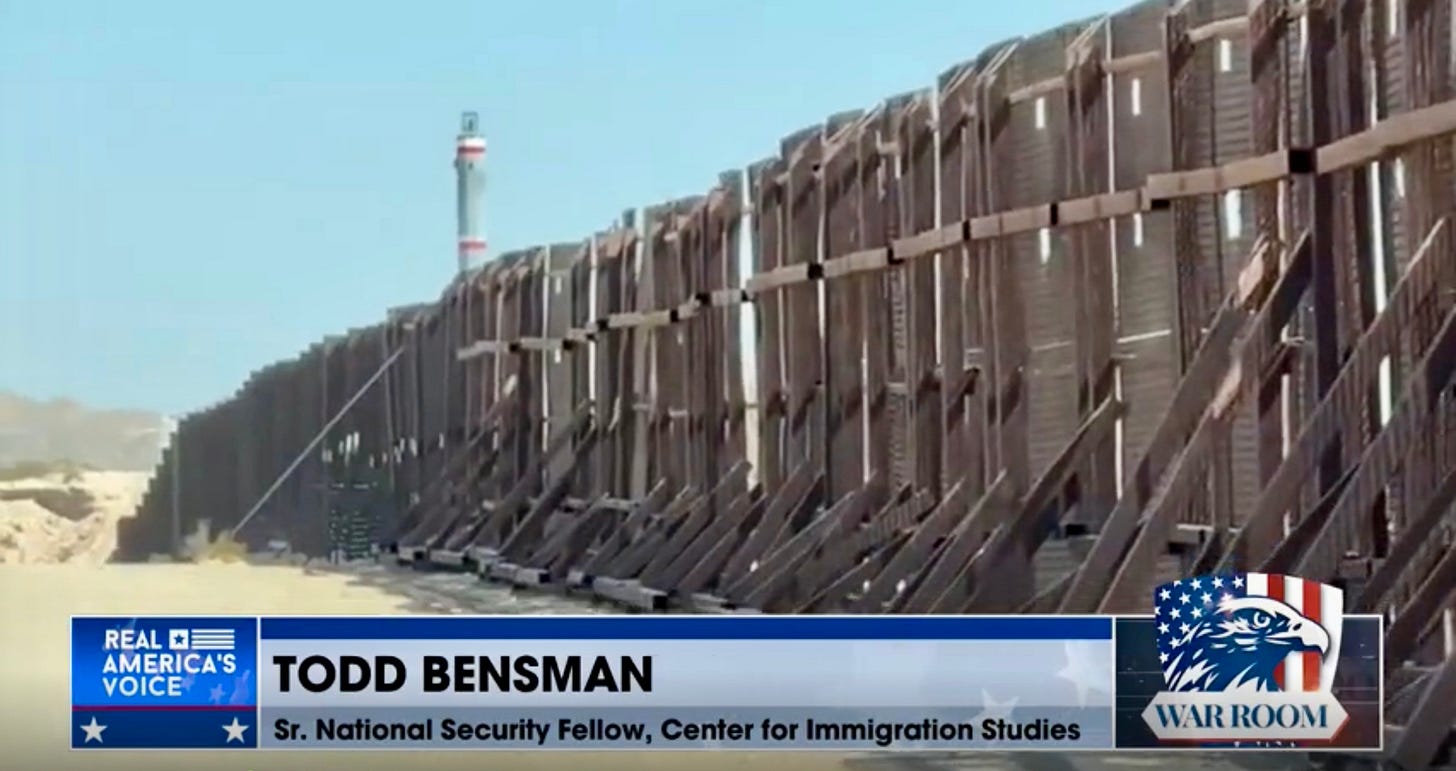

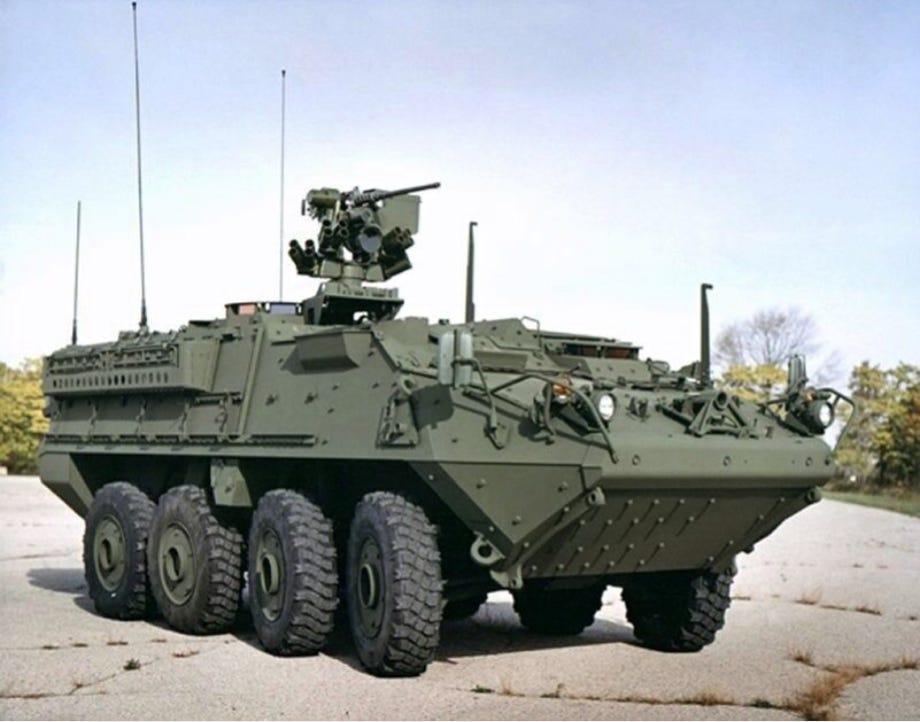

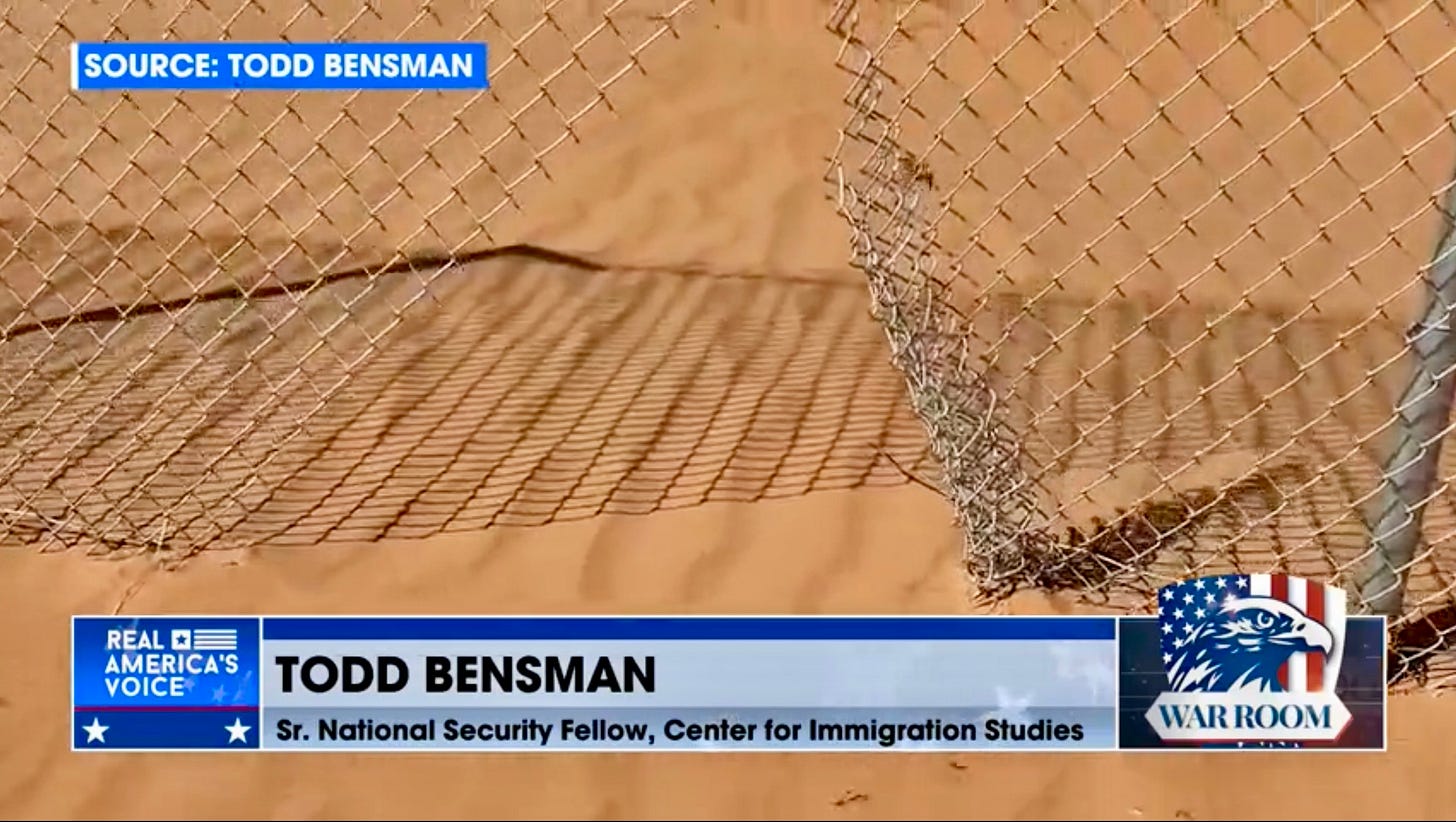
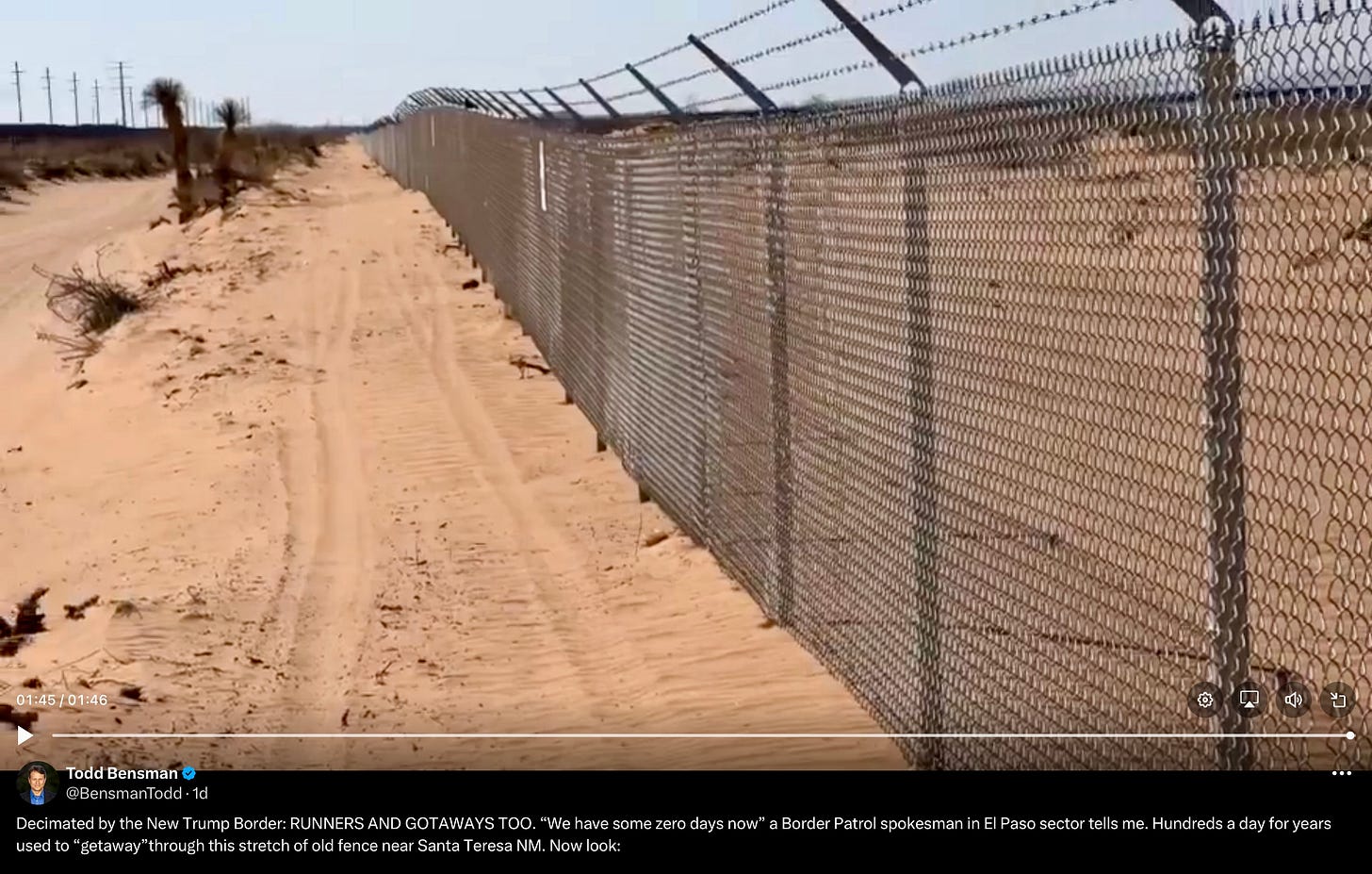
Good to hear. Fentanyl deaths here in Texas are high. Just lost a kid across the street to it a few months ago, tragically. Good kid too. Thank you President Trump for stopping these nasty cartels from killing our children. God bless you and keep you safe. Elon, too ❤️
I love you, Kim ♥️